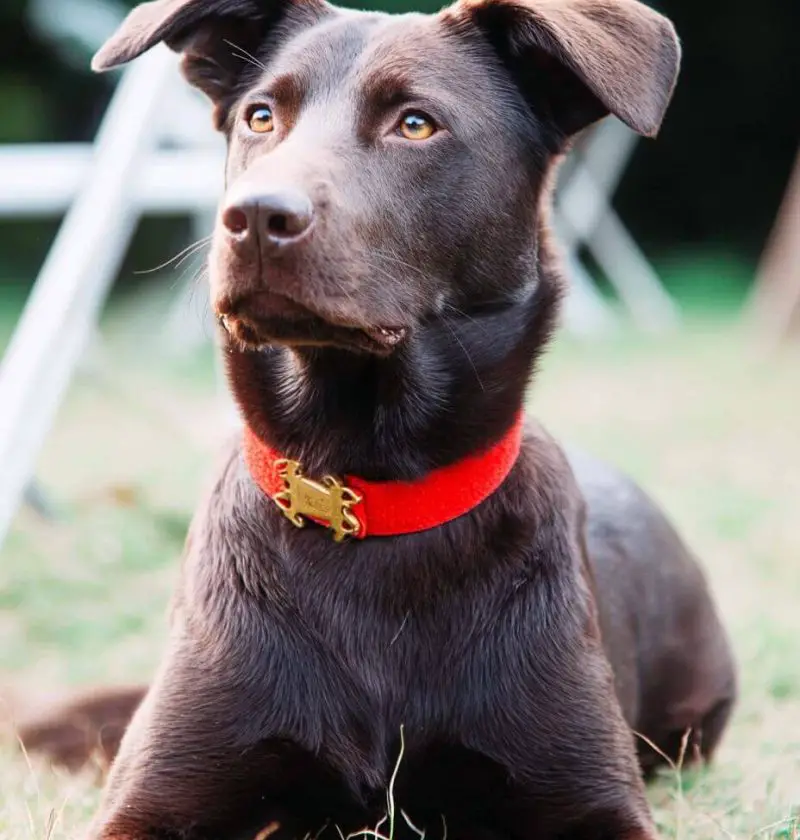Save This Recipe
So picture this: I’m out walking my dog, Ruby—she’s part couch potato, part squirrel chaser—and we’re doing our usual slow lap around the park. Coffee in hand, sun’s doing that golden glow thing. Beautiful morning. Then I see this gorgeous shepherd mix across the path, ears perked, alert… wearing a bright red collar.
Now, I’ve been around enough dogs to know: that red? That’s not just for show. It’s a little “heads up” in collar form. A quiet, polite way of saying, “Please don’t rush over.”
And I get it—because Ruby used to be that dog.
Why Red Collars Aren’t Just for Fashion
You know how red usually means “stop” or “slow down”? Same deal here. A red collar is the dog-world equivalent of a caution sign.
Not because the dog is mean. Not because they’re bad.
Because they just might need a little extra space.
Here’s why you might spot one:
-
They’re shy, nervous, or easily overwhelmed
-
They’re still learning how to people (or how to dog)
-
They’re recovering from a rough past
-
They’re reactive around strangers, loud kids, or other dogs
-
They’ve got pain issues that make touch tricky
It’s not drama—it’s just communication.
Okay, So What Should You Do?
Honestly? Nothing fancy. Just… be cool.
Don’t sprint up squealing
I know, I know—floppy ears and wiggly tails make our hearts melt. But with a red-collared dog, it’s best to let them come to you, if at all. No sudden moves. No booming “HELLO PUPPYYYYY!” Just… chill.
Check their body language
You can learn a lot from a dog just by watching. Are they relaxed and sniffing around? Or stiff, pulled back, eyes wide? Red collars are your clue to read the room before you dive in with pets and praise.
Talk to the human
Always ask. Seriously. Just a quick “Mind if I say hi?” goes a long way. If they say “Not today,” that’s not rude—it’s responsible.
Mind your own dog, too
If your dog is super friendly, awesome. But even friendly dogs can be a bit much for red-collar pups. Keep your leash short and be ready to gently steer them away if needed.
Thinking Your Dog Might Need One?
Listen, there’s no shame in that game.
Ruby wore a red collar for months after we adopted her. She was skittish, barked at everything from skateboards to mailboxes. It wasn’t aggression—it was fear. The red collar bought her space. And in that space, she learned to trust.
There are great options out there—some say “Nervous,” others say “No Dogs,” or just plain “Do Not Pet.” It’s not mean. It’s helpful. For your dog and everyone else.
Let’s Normalize This, Please
You know what would be great? If we all just knew this. If kids were taught it in school. If every dog-loving grown-up recognized red collars as a signal to pause and show respect.
So if someone asks, “Why’s your dog wearing red?”—tell them. Share it at the dog park. Mention it in your group chat. This little bit of awareness can save a whole lot of stress (and avoid those awkward doggy stare-downs).
Wrapping It Up with a Wag
At the end of the day (oops—I mean, when all is said and woofed), it’s about empathy. Understanding that not all dogs are ready for belly rubs from strangers. That a red collar isn’t a warning—it’s a whisper: “Give me a little space.”
So let’s listen.
Let’s be kind.
And let’s keep learning—because if our dogs can do it, so can we.
Got a story or question about red collars? I’d love to hear it. Seriously, leave a comment or shoot me a message. We’re all figuring this out together—and that’s a pretty great place to start.

